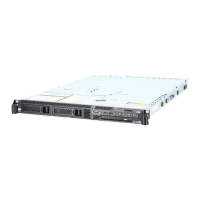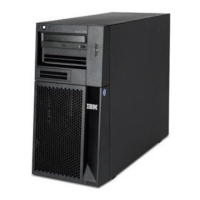↓ Go to step 15 of this procedure.
10. Does the Display Unknown Mirrored Load-Source Status display appear on
the console?
Yes No
↓ Go to step 13 of this procedure.
11. Is the reference code the same one that sent you to this procedure?
No Yes
↓ Go to step 17 of this procedure.
12. Either a new reference code occurred, or the reference code is 0000. There may
be more than one problem.
The original I/O card may be failing, but it must be installed in the system to
continue problem isolation.
Install the original I/O card by doing the following:
a. Power off the system or the expansion tower (see “Powering On and
Powering Off the System and Logical Partitions” on page 922).
b. Remove the I/O card you installed in step 8 of this procedure and install
the original I/O card.
Note: Do not power on the system or the expansion tower now.
A device connected to the I/O card could be the failing item.
Go to SDIOP-PIP16, step 7 to continue isolating the problem.
This ends the procedure.
13. On some of the displays that are listed in step 9 of this procedure, you must
press F11 to display reference codes.
Are all of the reference codes 0000?
No Yes
↓ Go to “LIC-PIP 11” on page 350 and use cause code 0002.
This ends the procedure.
14. Go to step 16 of this procedure and use the reference code that is not 0000.
15. Look at the product activity log (see “Product Activity Log” in the iSeries
Service Functions information).
Is an SRC logged as a result of this IPL?
Yes No
↓ The I/O card, which you removed in step 8 of this procedure, is the
failing item.
This ends the procedure.
16. Is the SRC or reference code the same one that sent you to this procedure?
Yes No
↓ Record the SRC on the Problem Summary Form (see “Appendix A.
Problem Summary Form” on page 951). Then go to “Chapter 2. Unit
Reference Codes” on page 59 to correct the problem.
This ends the procedure.
17. The original I/O card is not the failing item.
SDIOP PIPs
406
iSeries Model 830, 840, SB2, and SB3 Problem Analysis, Repair and Parts V5R1

